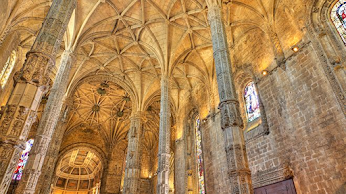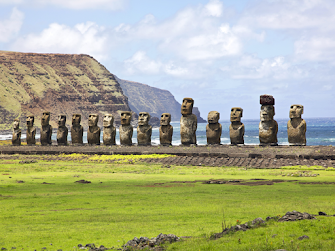Some incredible sites have been around and attracting tourists for hundreds of years and are as fascinating now as they were when they were first uncovered. From man-made marvels such as Taj Mahal and the Parthenon to natural wonders like the Grand Canyon and Iguazu Falls, these stunning sites should be at the top of your travel bucket list.
Machu Picchu, Peru
Built in lush, mountainous terrain high above the Urubamba River, Machu Picchu lies in one of the most stunning settings of any archeological site in the world. This ancient city of Incas cascades down steep walls on each side of the mountain, with terraced steps that disappear over cliff edges into the valley below. These incredible ruins have been restored and are well maintained, giving visitors a good indication of what the city might have looked like when it was occupied during the 15th and 16th centuries.
Many people come to Peru for the sole purpose of visiting Machu Picchu, and the journey to the ruins can be an adventure in and of itself, depending on how travelers choose to reach the site. Adventurous souls can opt for a guided, multi-day hike and camping trip along the famous Inca Trail to reach the site, or choose the easier option of accessing the ruins by bus from the small town of Aguas Calientes at the base of the hill, which most visitors get to by train from Cusco or the Sacred Valley.
Taj Mahal
The Taj Mahal is universally recognised as the greatest masterpiece in Indo-Islamic architecture. The white marble mausoleum was commissioned in 1632 by Mughal emperor Shah Jahan to house the tomb of his favourite wife, Mumtaz Mahal. Spatial grandeur, arches, domes, relief work and precious stone inlay are among its defining characteristics.
Angkor Wat
Exploring the mysteries Angkor Wat in Siem Reap, Cambodia is an unforgettable bucket list trip. Part of one of the most significant archaeological sites in Southeast Asia (the ancient capital of the Khmer Empire, from the 9th to the 14th century), this massive temple complex was originally constructed as a Hindu place of worship for the god Vishnu and is the largest religious structure on the planet!
Mount Mulu
Gunung Mulu National Park is one of Nature’s most spectacular achievements and the ‘Jewels in the Crown’ of Sarawak’s expanding network of national park. It is also the largest national park, covering 544 sq km of primary rainforest; which is crass-crossed by fast flowing rivers and clear jungle streams. Mulu is dominated by three mountains – Gunung Mulu (2,376 m), Gunung Api (1,750 m) and Gunung Benarat (1,858 m). Yet many of Mulu’s greatest attractions lie deep below the surface. Hidden underneath the forested slopes of these mountains is one of the largest limestone cave system in the world.
Whether you are looking for a tranquil escape in the rainforest of Borneo, the physical challenge of trekking summits and climbing through expansive cave systems or perhaps somewhere in between, Mulu will tantalize your senses and leave you wanting to discover more.
Great Barrier Reef
The Great Barrier Reef, off the coast of Queensland Australia, is the largest living thing on earth. It’s so huge that you can see it from outer space! Stretching for over 2,300 kilometres, this ecosystem is home to a diversity of marine line, including 400 types of coral, 1500 species of fish, and 4000 varieties of molluscs. Not surprisingly it’s a magnet for scuba divers.
Bagan, Myanmar
Thousands of ancient temples and stupas stretch endlessly across the landscape at Bagan, where the silhouette of the temple spires against the sky in the early morning or late day is a magical sight. The area is known for having the largest concentration of Buddhist temples in the world, many of which were built in the 1000s and 1100s, when it was the capital of the Pagan Kingdom.
Some of these have been restored, and others are little more than ruins. They also range in size and level of sophistication, creating an intriguing mix of structures that make visitors want to keep exploring the site. You can tour the area on rickety old bicycles, hire a horse and cart, take a hot air balloon ride over the site, or simply hire a taxi. Each of these methods has its own appeal.
Plitvice Lakes National Park
Plitvice Lakes National Park in Croatia is located halfway between Zagreb and Zadar. This idyllic oasis is renowned for its 16 crystalline lakes connected by a series of exquisite waterfalls, splendid caves and lush forests. Each year, more than one million visitors flock to this natural paradise, making it Croatia’s main tourist attraction.
Great Wall of China
Stretching almost 6,000 kilometers as it snakes its way through forests and mountains, the Great Wall of China is one of those undeniable bucket list sites that have long inspired great adventures. This massive wall, connecting battlements and watchtowers, was built over the centuries, with the oldest sections dating back to the 7th century BC.
Today, you can opt to simply visit the wall on a day trip from places like Beijing, or tackle whole sections of it on organized, multi-day trips. Some sections of the wall have been restored, while other sections are badly in need of repair.
The Parthenon
The Acropolis of Athens is an enduring symbol of Classical Greece. The crown jewel of this hilltop citadel is the Parthenon, a former temple dedicated to the goddess Athena. Built by Ictinus and Callicrates, beginning in 447 BCE, this Doric icon is regarded as the most important surviving ancient Greek monument.
Roman Colosseum, Italy
One of the most recognizable structures in the world, the Roman Colosseum is the largest building remaining from Roman times. Its imposing presence in the city center of modern day Rome is a testament to the incredible history of the city and the achievements of the Roman Empire.
Visitors popping up from the nearest subway stop or turning a corner and seeing it for the first time can't help but be stunned by its immense presence. Construction began on the structure in 72 AD and today, it is still one of the greatest tourist attractions in the world.
Grand Canyon
Words don’t do even begin to do justice to the glory of the Grand Canyon. Formed by Colorado River activity over the past six million years, it’s one of the longest and deepest gorges (averaging 1,600m in depth) on earth. Its immense size and layered red rocks make it a must-see-before-you-die attraction. Want to bring your four-legged friend along? The Grand Canyon is also pet-friendly!
Los Glaciares National Park
Located in the southwest of Santa Cruz province of the Argentine part of Patagonia in a remote area known as the Austral Andes, Los Glaciares National Park is a rugged paradise of granite peaks, lakes and numerous glaciers that cover half the 600,000-hectare expanse. Traversing this spectacular scenery is a once-in-a-lifetime experience.
Jeronimos Monastery
Travel to the Belem district at the entrance to the port of Lisbon to find the Jeronimos Monastery, which dates back to the 15th century. This highly ornate religious building was constructed and donated to the monks of Saint Hieronymus to pray for sailors on their voyages. Its cloisters, columns, arcades and complex ornamentation are characteristic of Portuguese Gothic style.
Borobudur, Indonesia
Borobudur is one of the most important Buddhist sites in the world and certainly one of Indonesia's most famous landmarks. Set in lush, tropical surroundings, with mountains and volcanoes rising in the distance, the site is visually stunning and soothingly peaceful.
Located on the island of Java, near Yogyakarta, this massive temple complex was constructed in the 700s, but two to three hundred years later, the site was abandoned, possibly due to volcanic eruptions in the area, and went relatively undisturbed for centuries. The site was uncovered in the 1800s by the British and later restored. Today, it is one of the most important tourist attractions in Indonesia.
Iguazu Falls
Stretching 2.7 kilometres across Argentina and Brazil, Iguazu Falls is the largest system of waterfalls in the world. The sheer size, thunderous sound and spectacle of these 275 individual cascades – including the 82-metre-tall Devil’s Throat – is truly jaw-dropping. The exotic flora and fauna of the surrounding rainforest add to the allure.
Pyramids of Giza, Egypt
One of the most iconic sites in the world, the Pyramids of Giza, just outside Cairo, are a surreal sight rising from the barren desert landscape. Standing guard nearby, and almost as impressive, is the Sphinx, gazing blankly out over the land.
The pyramids were built as tombs for the Pharaohs, the largest of which was constructed between 2560 and 2540 BC. To put their age in perspective, they were already more than 2,600 years old when the Colosseum in Rome was being built. Today, these giant monuments are the sole surviving member of the Seven Wonders of the Ancient World.
Petra, Jordan
A dramatic, narrow rock gorge allows entrance to the ancient city of Petra, a stone city with dwellings hewn into sandstone walls. This ancient capital city of the Nabataeans has roots that trace back to as early as the 4th or 5th century BC. Discovered by the West in the early 1800s, it has been referred to as "the rose city" for the color of the rock, and for obvious reason, "the carved city."
Situated in a mountainous area with limited access, it held a strategic position on an important trade route in the region. Today, Petra is the most important tourist attraction in Jordan.
Easter Island
Easter Island is a Chilean island in the south Pacific Ocean, famous for the giant statues known as Moais, which dot the landscape. Created by the Rapa Nui people, who are thought to have inhabited the island from the 12th century onward, hundreds of Moais are spread around the island.
Some are partially toppled, while others stand erect; some stand on ahu (stone platforms), and many still remain at the quarry where they were created. Ranging in size from a meter to 20 meters, each carving is unique and thought to symbolize an ancestor.
Mesa Verde, USA
Mesa Verde is home to one of the most visually stunning archeological sites in the USA and some of the most well preserved Indian ruins in North America. The most impressive sites are the cliff dwellings tucked precariously into the canyon walls, but the entire area, including the forest covered plateau, contains a vast array of ruins.
The Ancestral Puebloans inhabited this area of what is now Colorado for hundreds of years, living on top of the plateau between the 6th and 12th centuries and then in the cliff dwellings until the late 13th century. The drive up to the site is along a gently twisting road to the top of the mesa, where you can tour the sites on the plateau by car to see pit houses and other ruins, and enjoy stunning views of the dwellings in the canyon walls.
Those who are up for a slight physical challenge can take a guided tour through some of the cliff dwellings, climbing up ladders and exploring the site in detail.
Stonehenge, England
This incredible prehistoric monument is one of the United Kingdom's most visited attractions and certainly one of its most unique sites, drawing huge numbers of visitors each year. The monument is thought to have been erected between 3000-1500 BC, but there is no record of its origin or purpose, leading to all kinds of speculation and myths, some of which suggest religious or astronomical significance.
As a result, the Bronze Age ring of standing stones holds an almost mystical fascination, particularly around the summer and winter solstices, when the light from the sunrise and sunset is aligned with the stones. Located near the city of Salisbury, Stonehenge can be easily visited on a day trip from London.




















No comments:
Post a Comment